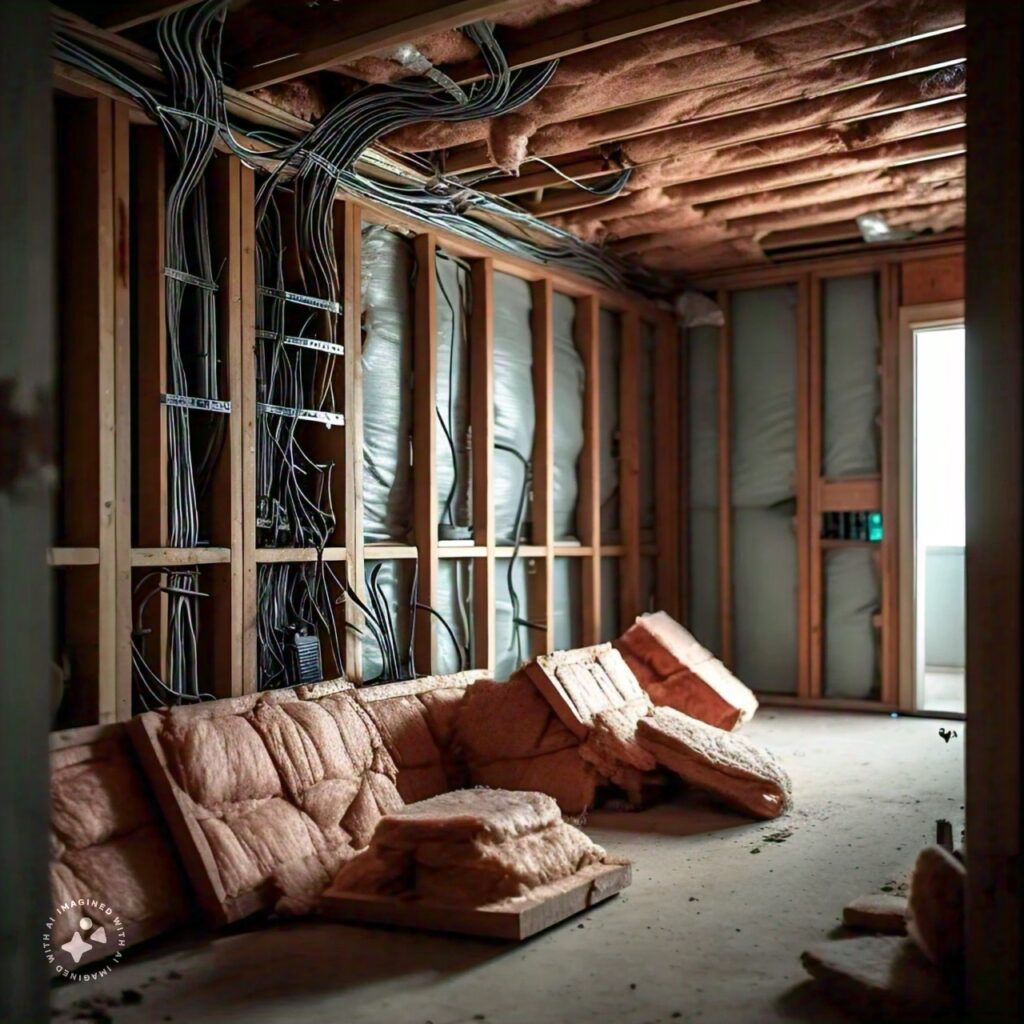Maintaining a clean kitchen floor is essential for a hygienic and pleasant cooking environment, especially in Singapore where humid weather can exacerbate oil buildup. Here are six practical methods to effectively clean oily kitchen floors:
But first, let’s talk about what cause Oil Floor in kitchens.
Understanding the Culprits Behind Oily Kitchen Floors
An oily kitchen floor can be a frustrating and potentially hazardous problem, but to effectively combat it, we must first understand its root causes. Several factors contribute to the buildup of grease and oil on kitchen floors, particularly in environments like Singapore.
1. Cooking Activities:

- Frying and Sauteing: The process of frying and sautéing inevitably leads to the release of grease and oil into the air. Over time, these airborne particles settle onto nearby surfaces, including kitchen floors.
- Spills and Splatters: Accidental spills and splatters during cooking can quickly coat the floor with oily residue, especially in busy kitchens.
2. Improper Ventilation:

- Inadequate Ventilation Systems: Without proper ventilation, grease-laden vapors from cooking activities linger in the kitchen instead of being safely vented outdoors. This results in a higher concentration of grease settling on surfaces, including floors.
- Humid Climate: Singapore’s humid climate exacerbates the problem by causing grease and oil to adhere more stubbornly to surfaces, making cleaning efforts more challenging.
3. Infrequent Cleaning:
- Neglected Cleaning Routine: Failure to clean the kitchen floor regularly allows grease and oil to accumulate over time, creating a sticky and unsanitary environment.
- Incorrect Cleaning Methods: Using ineffective or incorrect cleaning methods may not adequately remove grease buildup, leading to persistent oily floors.
4. Residue from Cooking Ingredients:

- Oil Residue from Ingredients: Certain cooking ingredients, such as cooking oils and fatty foods, can leave behind oily residue when spilled or splattered on the floor.
- Sauces and Condiments: Sauces, marinades, and condiments containing oil-based ingredients contribute to the buildup of grease on kitchen surfaces when spilled or dripped.
How To Clean Oily Kitchen Floor(6 Best Mopping Solutions)
1. Vinegar and Water Solution

Vinegar, a versatile household staple, can work wonders in cutting through grease and oil stains on kitchen floors. Here’s how to use it effectively:
- Mix Solution: Combine equal parts of white vinegar and warm water in a bucket or spray bottle.
- Apply Solution: Apply the vinegar and water solution generously onto the oily areas of the floor.
- Scrub Gently: Use a scrub brush or mop to gently scrub the floor, focusing on areas with heavy oil buildup.
- Rinse Thoroughly: After scrubbing, rinse the floor with clean water to remove any residue.
- Dry Completely: Ensure the floor is completely dry to prevent slipping accidents.
2. Baking Soda Paste
Baking soda is another kitchen staple that possesses excellent degreasing properties. Follow these steps to create a powerful cleaning paste:
- Make Paste: Mix baking soda with a small amount of water to create a thick paste.
- Apply Paste: Spread the paste onto the oily areas of the kitchen floor, concentrating on tough stains.
- Let It Sit: Allow the baking soda paste to sit on the floor for 10-15 minutes to penetrate and break down the grease.
- Scrub and Rinse: Use a scrub brush or sponge to gently scrub the floor, then rinse thoroughly with clean water.
- Dry Thoroughly: Ensure the floor is completely dry before walking on it.
3. Dish Soap and Warm Water
Dish soap is designed to cut through grease on dishes, making it an effective option for cleaning oily kitchen floors. Follow these simple steps:
- Prepare Solution: Fill a bucket with warm water and add a few drops of dish soap.
- Mix Well: Stir the water and dish soap together until well mixed.
- Apply Solution: Use a mop or sponge to apply the soapy solution to the oily areas of the floor.
- Scrub Gently: Use a scrub brush or mop to gently scrub the floor, paying extra attention to areas with stubborn oil stains.
- Rinse and Dry: Rinse the floor thoroughly with clean water to remove any soap residue, then dry it completely with a towel or allow it to air dry.
4. Lemon Juice and Hot Water
Lemon juice not only adds a refreshing scent to your kitchen but also possesses natural degreasing properties. Here’s how to use it effectively:
- Prepare Solution: Squeeze fresh lemon juice into a bucket of hot water.
- Mix Thoroughly: Stir the lemon juice and hot water together to ensure thorough mixing.
- Apply Solution: Use a mop or sponge to apply the lemon juice solution to the oily areas of the floor.
- Let It Sit: Allow the solution to sit on the floor for a few minutes to loosen the grease.
- Scrub and Rinse: Gently scrub the floor with a brush or mop, then rinse with clean water.
- Dry Completely: Ensure the floor is completely dry to prevent slipping.
5. Commercial Degreaser
For stubborn oil stains or heavy buildup, a commercial degreaser can be highly effective. Here’s how to use it safely:
- Read Instructions: Follow the manufacturer’s instructions carefully, as different degreasers may have specific dilution ratios or application methods.
- Apply Degreaser: Apply the degreaser directly to the oily areas of the floor according to the instructions.
- Allow Dwell Time: Let the degreaser sit on the floor for the recommended dwell time to penetrate and dissolve the grease.
- Scrub and Rinse: Use a scrub brush or mop to agitate the degreaser, then rinse the floor thoroughly with clean water.
- Ventilate: Ensure proper ventilation while using commercial degreasers to avoid inhaling fumes.
6. Steam Cleaning

Steam cleaning is a highly efficient method for deep cleaning and sanitizing kitchen floors, particularly for tiled or laminate surfaces. Here’s how to do it safely:
- Use Steam Cleaner: Follow the manufacturer’s instructions for your steam cleaner to ensure safe and effective usage.
- Prepare Surface: Sweep or vacuum the floor to remove loose dirt and debris before steam cleaning.
- Steam Clean: Use the steam cleaner to apply high-temperature steam to the oily areas of the floor, focusing on one section at a time.
- Wipe Away Residue: Wipe away any loosened grease and dirt with a clean cloth or mop as you steam clean.
- Dry Thoroughly: Allow the floor to air dry completely before walking on it, as excess moisture can lead to slips and falls.
What if Kitchen Floor is Sticky after Mopping
If your kitchen floor feels sticky after mopping, it could be due to various reasons, such as using too much detergent, not rinsing the floor thoroughly, or leaving behind soap residue. Here are some steps you can take to address the issue:
Troubleshooting Sticky Floors After Mopping:
1. Reduce Detergent Usage:
- Adjust Dilution: If you’re using a cleaning solution, try diluting it with more water to reduce its concentration.
- Use Less Detergent: Use a smaller amount of detergent or cleaning solution when mopping to prevent residue buildup.
2. Rinse Thoroughly:
- Use Clean Water: After mopping with detergent, rinse the floor thoroughly with clean water to remove any remaining soap residue.
- Change Water Frequently: Change the rinse water frequently to avoid spreading dirt and soap residue.
3. Wipe Dry:
- Dry Mop or Towel: After mopping and rinsing, use a dry mop or clean towels to wipe the floor dry. This helps to remove any remaining moisture and prevent stickiness.
4. Use Vinegar Solution:
- Vinegar Rinse: If soap residue persists, mop the floor again with a solution of vinegar and water. Vinegar helps to break down soap residue and leaves floors clean and shiny.
5. Consider Steam Cleaning:
- Deep Cleaning: Steam cleaning can effectively remove stubborn residue from floors without leaving behind any chemicals. Consider using a steam cleaner for a thorough clean.
6. Adjust Mopping Technique:
- Avoid Excess Water: Ensure that your mop is not too wet when mopping. Excess water can leave behind residue and contribute to stickiness.
- Change Mop Heads Regularly: Old or dirty mop heads can spread dirt and residue, so change them regularly for a more effective clean.

